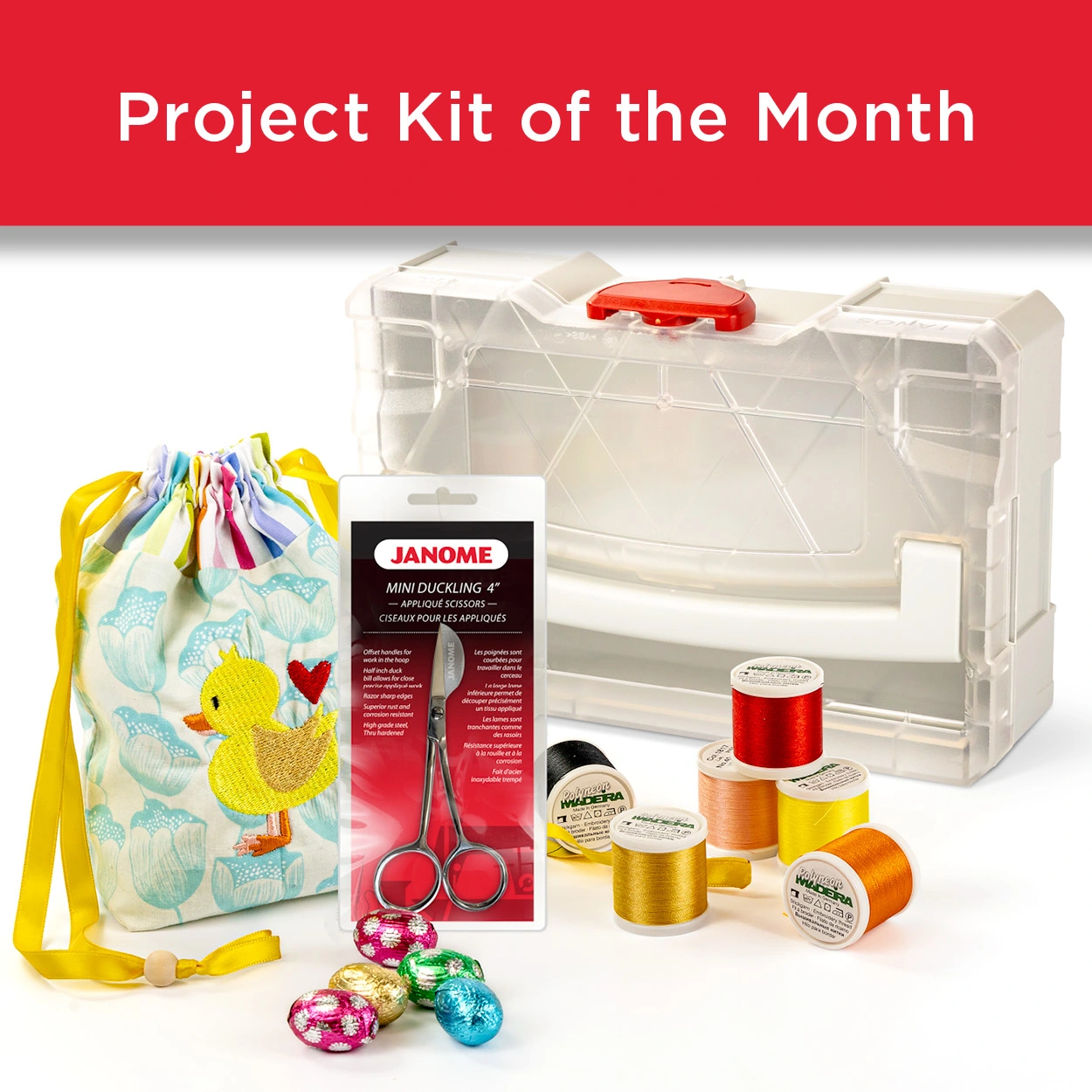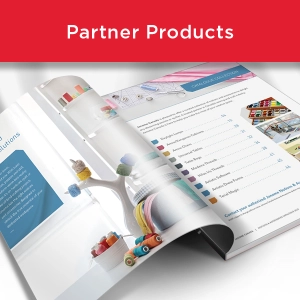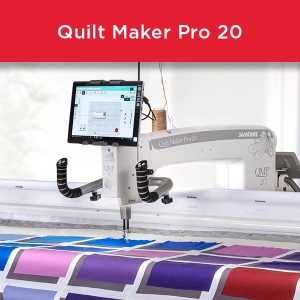The Foot Pressure Adjustment Dial
Ever had silk or chiffon fabrics slip away from you, oblivious of the feed dog traction, or do you find your quilts and denims struggle to move? It’s time to look at the pressure dial for the presser foot – not to be confused with the tension dial for your needle thread.
The foot pressure adjustment dial sets the amount of pressure that the presser foot places on the fabric. The amount of pressure would need to vary if you were switching between lightweight sheer fabric and multiple layers of thick fabric for the machine to feed the fabric evenly.
Where is the Foot Pressure Adjustment?
Depending on your sewing machine model, you may find the pressure adjustment, on the left top, inside the opening top cover of your machine or your machine may have an on-screen adjustment menu.

When to Make an Adjustment to the Amount of Pressure
If you find that the fabric slithers and slips when the presser foot is down, you need to increase the pressure on the presser foot. If the fabric is held so tightly that the feed dog is unable to move the fabric, decrease the amount of pressure on the pressure foot.
Depending on your sewing machine model, you may have up to 6 foot pressure settings. We recommend setting the pressure to maximum for light weight fabric such as organza and voile, medium for fabrics such as cotton and polyester, and minimum for heavy weight fabric such as canvas and denim.
Automatic Foot Pressure Adjustment
Some of our higher end computerised sewing machine models have built in sensors which will automatically detect the thickness of the fabric and make adjustment to the foot pressure. Models include HMC15000QM, MC15000, MC14000, MC12000, S9, MC9450QCP, MC9400QCP and S7.
Alternatives to Pressure Adjustment
Another solution to make your struggles with challenging fabric go much easier is to use an Even Feed Foot, also commonly known as a Walking Foot.
The foot is designed with a set of feed dogs to assist with smooth feeding. With this foot, fabric can be sewn without puckering, as the fabric is gripped and fed by both the upper and lower feed dogs.

At times, fabrics such as vinyl and faux leather may stick to a metal foot and not feed properly. A Janome Ultra Glide Foot which is moulded from a special resin can help solve the problem.

Sewing Tip: When sewing through many layers or thick fabric, it is always recommended to also increase your stitch length. Increasing the stitch length, will increase the movement of the feed dogs, this increases the fabric being fed through the machine while ewing.
This post contains information courtesy of Janome Australia.









Hi!
I love my Janome DM7200 🙂
I’ve just startet to sew/quilt with heavier fabric. It says om this site that the higher the number om the wheel (where you adjust the pressure foot) the thinner the fabric, but look at this from the manual:
Presser Foot Pressure Dial
Foot pressure can be adjusted by turning the presser foot pressure dial.
Set the pressure between “3” and “6” for ordinary fabrics. Set the pressure between “1” and “3” for fine fabrics and applique sewing.
Set the pressure between “5” and “6” for heavyweight fabrics.
So I am a bit confused..?
LikeLike
Hi Andrea,
This information was from an article by Janome Australia and I would agree with them: If a fabric is thin and slippery it may need a higher presser foot pressure (to hold the fabric more firmly and feed better) and if sewing with thicker, heavy fabrics which might not be feeding properly, try decreasing the presser foot pressure.
The confusion may be what #’s to use for low and high pressure. Unfortunately I don’t have access to the manual for the DM7200 so I am unable to verify if that is an error. Perhaps best to experiment and try different settings until you find the “sweet spot”.
Can you tell me the page # in the manual and I will see if I can investigate further in case there is an error.
Liz
JANOME CANADA
LikeLike
Page 11 in the manual 🙂
Thank you!
Click to access inst-book-m7200.pdf
LikeLike
Hi!
How do I adjust the pressure foot pressure on the Janome 2030DC? I can’t seem to find a dial. Does the screw on top of the machine do that?
Kind regards.
LikeLike
Hi Moen
I think you might be referring to the pre-tension discs for the bobbin winding. If so, this has nothing to do with presser foot presssure. I do not believe the 2030QDC has the presser foot pressure adjusting feature. Please check your manual but I’m pretty sure it does not. The next model up the line – the 3160 – does have this feature.
Liz
JANOME CANADA
LikeLike
hello, does the 5030 model have a foot pressure adjustment? I bought mine in the UK. (first time sewing jersey, am using zigzag stitch with paper underneath, and am awaiting my walking foot to arrive! fabric looks like it is being squeezed and stretching fabric, wondered of the foot pressure was too much) thanks
LikeLike
Hi Farah,
We are Janome Canada and not all models are the same in different countries. So I am not sure what model you are referring to: I assume you mean the DC5030? I looked up the manual – which you should have – and if there is a presser foot pressure adjustment, it will specify this. The manual I looked at has a dial on the left side of the machine BUT I do not know if this is the manual for the same model you have? Have you tried other stretch stitches on the machine? As I’m not sure exactly what model you have so it is hard to give much advice. The zig-zag may not be the best choice of stitch.
Yes, it does sound like you need a walking foot and less pressure on the foot. Jersey can be very soft and slippery so using stay tape applied (fused) to seams etc is the way to go for many knit fabrics. I find this much more successful than fussing with tissue paper.
You could also try to lengthen your stitch – that can help too. And I know you probably won’t want to hear this but some fabrics really are better sewed with a serger. I do a lot of sewing with knits (all different types) and I would not dream of doing this without using my serger as this copes so much better with soft, stretchy knits. There is presser foot pressure adjustment on most sergers as well as a very useful differential feed which feeds the fabric better and prevents stretching out/squeezing.
Hope some of these suggestions help you.
Liz
JANOME CANADA
LikeLike
Thanks for your very quick response! My machine is just plain 5030: https://www.johnlewis.com/janome-5030-sewing-machine-white/p2181282
The 5030DC seems very similar, but I cant spot the left side dial you mention (can only see the thread tension dial) – please could you tell me where you found it in the manual?
In fact, its the 05 stretchy stitch Im using.
And I had not known about stay tape! There seem to be many many types – when you say fused, do you mean iron on or sticky? wonder tape? Any recommendations I might find in the UK? So many questions!
thank you so much for your help (going to get a twin needle as well!)
LikeLike
Hi Farrah,
Unfortunately I am not familiar with the 5030 model sold at John Lewis as we are based in Canada and are unfamiliar with specific models sold in the UK? Perhaps you could ask at John Lewis where you purchased your machine? Or contact Janome UK ( in Stockport).
In the manual I looked at (5030DC) the dial was on the side of the machine to the left and above the needle. If it is not there on your model, then perhaps it is in a different place or your particular model does not have that feature?
Liz
JANOME CANADA
LikeLike
Hi there, I have a Janome 3160qdc that is new to me (actually its model 18750, but I think that it is the same as 3160qdc). I am trying to figure out if my machine has this feature – I am working with charmeuse and there definitely needs to be more presser foot pressure. I don’t see a dial anywhere. I have seen other brands of machines that have a screw you can tighten/loosen – is it possible my machine has that?
LikeLike
Hi Zachary,
I am not familiar with this model. Did you buy it in Canada? I googled and model 18750 is the Hello Kitty model which I do not believe we sold in Canada. It may look similar to the 3160 but does not necessarily have all the same features. I looked up the manual and there is no pressure foot pressure dial on the Hello Kitty model. Have you tried a different needle, foot eg the walking foot or spraying the fabric with a stiffening agent like Best Press?
Liz
JANOME CANADA
LikeLike
I am so glad you posted this info!! I just struggled with making buttonholes on a bulky jacket and this is what I needed to know. Thank you!!
LikeLike
Thank you for this information but I am confused about the When to make adjustment section. The paragraphs seem to contradict each other. Why would you set heavy fabrics to maximum pressure and fine fabrics to minimum when the previous sentence says just the opposite?
LikeLike
Hi Cheryl,
Good point. I have edited the post.
Liz
JANOME CANADA.
LikeLike